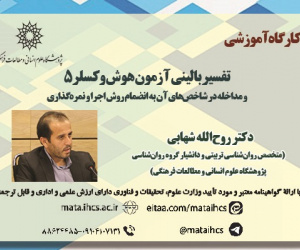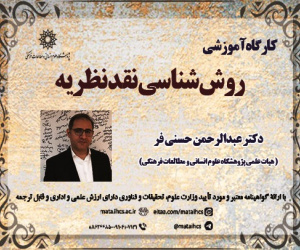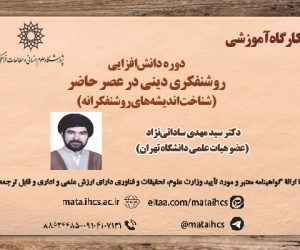بازمفهوم پردازی نافرمانی کودکان به مدد تفکر سه بعدی متیو لیپمن و خوانش دلوز از بارتلبی محرر: گشودن دریچه ای به امکان های نو (مقاله علمی وزارت علوم)
درجه علمی: نشریه علمی (وزارت علوم)
آرشیو
چکیده
هدف این مقاله مفهوم زدایی و سپس بازمفهوم پردازی نافرمانی کودکان با الهام از تفکر سه بعدی لیپمن و خوانش دلوز از بارتلبی محرّر است. برای دستیابی به این هدف، با روش کاوش گری فلسفی-انتقادی به بررسی مفهوم نافرمانی و انواع آن و سپس نافرمانی کودک پرداخته ایم. بدین ترتیب از تصورات پیشین درباره نافرمانی کودکان مفهوم زدایی کرده ایم تا نشان دهیم نافرمانی کودکان دارای ارزش ذاتی است و می توان آن را به مثابه بخشی از «صدا»ی کودکان و بازنمایی کننده بخشی از عاملیت آنان به حساب آورد. در گام دوم، با بهره گیری از مبانی نظری فلسفه برای کودکان نزد متیو لیپمن، به بازمفهوم پردازی نافرمانی کودکان پرداخته و نشان داده ایم که مبتنی بر سه بعد تفکر، یعنی انتقادی، خلاقانه و مراقبتی، نافرمانی کودکان می تواند سه صورتِ بلوغ نیافته، نیمه بلوغ یافته و بلوغ یافته به خود بگیرد. با پیروی از خوانش دلوز نیز «حرکت» نافرمانی کودکان را در دو شکل کنش مند و کنش گریز مطرح کرده ایم. دیگر یافته این جستار، مطرح نمودن دیالوگ به عنوان نیرویی است که امکان حرکت کردن میانِ انواع نافرمانی را برای کودکان فراهم می کند. بدین ترتیب، نافرمانی کودکان فرصت می یابد انواع مختلف خود را آشکار ساخته، میان آنها حرکت نموده و در این جریان امکان های نویی را به جهان اضافه کند، امکان های نویی که در نافرمانی بلوغ یافته به اوج خود می رسند.Reconceptualizing Children's Disobedience through Matthew Lipman's Three-Dimensional Thinking and Deleuze's Reading of Bartleby the Scrivener: Opening a Window to New Possibilities
This article aims to deconceptualize and re-conceptualize children’s disobedience by drawing inspiration from Lipman's three-dimensional thinking and Deleuze's reading of Bartleby the Scrivener. To achieve this goal, we have employed a philosophical-critical exploration method to examine the concept of disobedience and its various types, followed by an analysis of children's disobedience. In doing so, we have deconstructed previous perceptions of children's disobedience to demonstrate that it has intrinsic value and can be considered a part of their "voice" and a representation of their agency. In the second step, using the theoretical foundations of Matthew Lipman's philosophy for children, we have re-conceptualized children's disobedience, showing that based on the three dimensions of thinking—critical, creative, and caring—children's disobedience can take three forms: immature, semi-mature, and mature. Following Deleuze's reading, we have also discussed the "movement" of children's disobedience in two forms: active and passive. Finally, we have introduced dialogue as a drive or energy that enables children to move among the different types of disobedience. In this way, children's disobedience is given the opportunity to reveal its various forms, move between them, thus, add new possibilities to the world; possibilities that reach their peak in mature disobedience. Keywords: Children's Disobedience, Lipman's Three-Dimensional Thinking, Deleuze, Dialogue. P4/wC. Introduction We often admire many disobedient individuals in various fields of life because they have, in some way, altered the course of human history and opened new paths for thought and action. However, when it comes to children, their disobedience becomes an annoying and undesirable factor for us adults, and we try to eliminate it. As a result, children's disobedience is generally associated with negative connotations and is seen as a disruptive element in fields such as psychology, parenting, education, and training, which must be eradicated. Additionally, in some Eastern traditions and cultures, where obedience, compliance, and submission are regarded as forms of respect and are praised as virtues, this dissatisfaction with children's disobedience likely runs deeper, closing the door on the possibility of a child's disobedience. Relying on the theoretical foundations of Philosophy for Children (P4C), children's ability to question the current order and their inclination not to conform to the present state—in other words, their disobedience—is a natural ability that we adults gradually weaken and silence. We do this with justifications such as the necessity of socializing children and transmitting values in the home and school. Based on this critical perspective, this article aims to reconceptualize children's disobedience using the theoretical foundations of P4C. Our central question in this endeavor is: How can we reconceptualize a child's disobedience using these foundations in such a way that its capacities are activated, and new possibilities are added to the world? Materials & Methods This article can be considered a type of philosophical-critical exploration. Philosophical-critical exploration inherently seeks to go beyond norms and provide "innovation" and propose "alternative" options for inadequate cases. First, we examine the concept of children's disobedience, presenting both supporting and opposing theoretical assumptions as alternatives. Next, inspired by the three dimensions of thinking proposed by Matthew Lipman in the P4C movement and the interpretation of the story "Bartleby, the Scrivener" by Gilles Deleuze, we attempt to reconceptualize children's disobedience. Discussion & Result Recognizing the value of a child's voice and viewing disobedience as one of the expressions of this voice requires breaking away from cultural beliefs and habits, deconstructing concepts, and reconceptualizing the ideas of the child, childhood, and the child's voice







